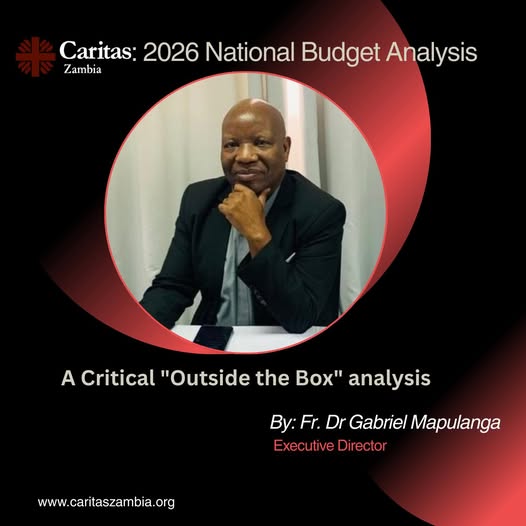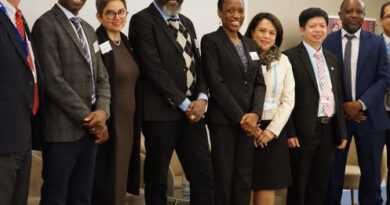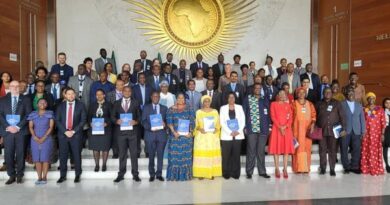2026 National Budget: Fr. Dr. Gabriel Mapulanga Offers Critical ‘Outside the Box’ Analysis
After listening to the presentation of the budget, all that came to my mind is a question: How do I analyze this budget? The presentation of the budget year after year is almost the same and I am familiar with it. I always feel, there is something not mentioned by the minister of Finance.
I just want to find the best way I can analyze the Zambian budget presented by the finance minister on Friday, 26th September 2025. In the first place, the minister presented it with a lot of confidence and pride – it was all success. The economy has recovered; foreign investment is coming back especially in mining. All success. Indeed, from the paper, the economy is doing well. I sincerely thank the government for turning the economy from the disaster it was heading to 5 years ago.
Maybe, in my personal capacity, the best analysis is to follow the idiom: “thinking outside the box.” In this case, “analysis outside the box”. I need to analyze that which is outside what the budget focused on. For instance, so much investment in mining. The thing is: how many has mining employed? So many youths offloaded every year on labor market. How many are absorbed before others are offloaded? When it comes to housing, what is the government doing about? The government is not doing much apart from building a few expensive houses.
A necessary approach for a socio-economic analysis, is needed: Focusing on the real-world impact on the most vulnerable, rather than just macroeconomic indicators, constitutes a critical “outside the box” analysis.
Here is a framework, in my personal opinion, for analyzing the Zambian budget from the perspective of Inclusivity, Employment, and Basic Needs (specifically housing), counterbalancing the government’s narrative of high-level economic success.
1. Deconstructing “Jobless Growth”: The Mining Sector Trap
The budget’s emphasis on mining investment and its expected economic recovery often leads to what is known as “jobless growth.” This is the core area to analyze outside the box.
A. Employment Multiplier Effect
- Key Question: What is the employment elasticity (jobs created per unit of growth) of the mining sector compared to other sectors?
- Analysis Point: Mining is highly capital-intensive, meaning it relies more on machines, technology, and large financial investments than on human labour. Its contribution to GDP (Gross Domestic Product) is disproportionately larger than its contribution to employment.
- Actionable Data: Get the latest available figures on the percentage of the labour force employed in mining versus the percentage of GDP it contributes. High growth in mining may only benefit a small, segment of the population, leaving the majority of the working-age population behind.
B. Youth on the Labour Market
- Key Question: How does the budget’s spending on Education, Skills Development, and Youth Empowerment compare to the scale of the youth unemployment problem?
- Analysis Point: If thousands of graduates are “offloaded” onto the labour market annually, the focus needs to be on sectors with high absorption capacity.
-
- Alternative Sector Focus: Analyze allocations to Agriculture, Tourism, Manufacturing (especially value addition), and the SME (Small and Medium Enterprise) sector, which are typically more labour-intensive.
- Budgetary Commitment: Look for concrete and sufficient financial allocations to vocational training and entrepreneurship programmes that address the skill mismatch and foster job creation outside the major industries.
2. Analyzing the “Housing Crisis”: Beyond Luxury Homes
My point about the government (NAPSA, and others) building a “few expensive houses” highlights the crucial difference between housing development and affordable housing.
A. Affordability and Supply-Demand Mismatch
- Key Question: What specific budgetary line items address low-cost housing and slum upgrading in densely populated urban and peri-urban areas?
- Analysis Point: A budget should reflect a commitment to the needs of the majority of the population.
- Focus on the Poor: Expensive housing caters to the wealthy or middle-class, but the most acute housing crisis in Zambia is faced by the poor, who live in informal settlements. The analysis should focus on social housing schemes, subsidies for basic building materials for low-income families, and investment in essential infrastructure (water, sanitation, roads) in informal settlements, which dramatically improves their quality of life.
B. Land and Policy
- Key Question: Are there budget allocations for streamlining the land titling process, which provides security of tenure for low-income residents?
- Analysis Point: Housing policy isn’t just about building; it’s about empowerment. Budgetary support for land reforms that favour the poor and reduce bureaucratic hurdles is a key indicator of genuine commitment.
3. The Social Protection Perspective: Reaching the “Bottom 48%”
The overall confidence in the economy may hide persistent issues of poverty and inequality. My personal analysis must use the budget to gauge the government’s commitment to social equity.
A. Real Value of Social Safety Nets
Key Question: Has the allocation to core social protection programmes (like the Social Cash Transfer or Food Security Pack) kept pace with inflation and the rising cost of living?
-
-
- Analysis Point: Nominal increases in a budget can be misleading. If the budget, for instance, increased by 6.3% but inflation is higher (e.g., 12%), the real value of the spending has decreased. This means poor families are receiving less support in real terms. You must check the real change in these allocations.
-
B. Geographic and Regional Equity
Key Question: Is the budget heavily tilted toward urban, already developed areas, or does it adequately fund decentralization initiatives (like the Constituency Development Fund—CDF) and rural infrastructure?
-
-
- Analysis Point: True inclusive recovery requires investment in all regions. While CDF is an initiative to promote local development, the analysis should scrutinize the capacity and transparency of its implementation, ensuring the money actually translates to local jobs and essential services, rather than being concentrated on a few high-profile projects.
-
In Summary: The “Outside the Box” Checklist
| Government Focus (The “Box”) | my Focus (Outside the Box) | Key Question to Ask |
| Mining GDP/Investment | Mining Employment & Value Addition | How many sustainable jobs does this massive investment create for a growing, young population? |
| Infrastructure (Trunk Roads) | Social Housing & Informal Settlement Upgrading | How much is spent on low-cost housing and basic infrastructure for the urban/peri-urban poor? |
| Overall Economic Growth (GDP) | Poverty & Inequality Reduction (Real Terms) | Does the real value of social protection spending increase or decrease after accounting for inflation? |
| Recruitment (e.g., Teachers) | Youth Skills & Entrepreneurship | Are there sufficient, well-funded programmes to absorb the thousands of unemployed, non-government job-seekers? |



